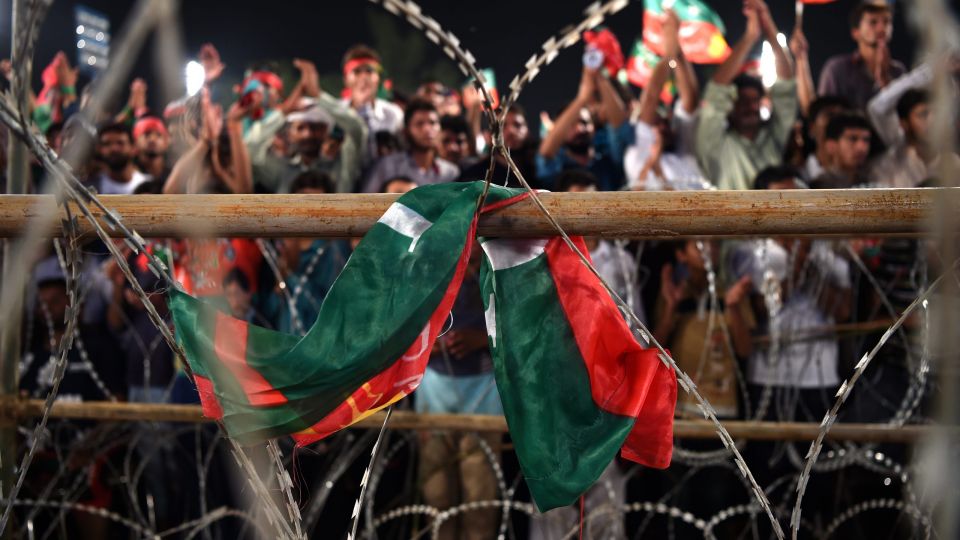April 12, 2019
The government will find it challenging to keep Pakistan afloat.
In case you’ve missed it, there have recently been a slew of forecasts that say the economy is likely to slow to less than 3.5 per cent GDP growth this year (from 5.8pc last year), and next year will be even more difficult as it is expected to contract further to 2.5pc or thereabouts. The World Bank has put these projections out most recently, but the State Bank agrees (though they have not put out any projection for next year at this stage), and the data that the government and the IMF are dealing with during their talks says more or less the same thing.
Meanwhile, inflation is set to rise further for a few months, crossing 13pc, as per the World Bank, before it stabilises. The IMF and government projections show inflation to be elevated all through next year as the period average (the sum of monthly CPI readings for the year divided by 12) is expected to be higher than 13pc. The period average for the current year is just above 8pc, so we’re looking at a steep and sustained climb.
The data is not the only indication that the present state of difficulties is set to continue for at least another year and a half. Finance Minister Asad Umar in his numerous public pronouncements has said so, the latest example being his press conference right before his departure to Washington D.C. on Monday. He specifically said the period of slow growth will continue for another year and a half. The State Bank is not putting an endpoint on this timeline (perhaps they should) but they also say that the period of adjustment is set to continue.
Earlier in January, the finance minister was giving us assurances that the worst was over, that the economy had turned the corner. Today, he has tempered that line, as growth continued to plummet and inflation continued to rise. Even the medium-term strategy paper released by the finance ministry on the same day as his talk says that the period of adjustment will continue, and “will not be cost-free”, without really putting an endpoint on the timeline. Today, he is saying the economy will turn the corner later, but a painful and necessary period of adjustment has to be crossed before we get there.
By March, it was more than obvious that no corner had been turned. The State Bank said the process of adjustment would continue, inflation data came in at a five-year high and the revenue shortfall marched on. The government tried to tell us that the current account deficit had narrowed (which it had from February onward), and more recent trade data showed imports being constricted further. The external picture has been stabilised, they are now trying to say.
But it has not. Exports are flat, and despite a massive devaluation, Rs26 billion worth of a gas subsidy was given in January to “export-oriented sectors”, and much more. In an emergency, you can choke imports and expenditures to preserve foreign exchange reserves and cut the fiscal deficit. But these steps also choke growth. These measures are a little like trying to lose weight by eating less. You will probably lose weight, but is that really a healthy way to go?
In fact, these are emergency steps taken to prevent a full-blown crisis from emerging. The real game begins afterwards, when foreign exchange reserves have to be built and revenues raised.
In the next year, the IMF is asking the government to increase its reserve assets by almost 50pc, and increase FBR tax collection by around Rs1.4 trillion, where the government is proposing Rs1.16tr. The current account deficit, which the government has managed to reduce by around 1.5pc of GDP this year, needs to be contracted by another 2.8pc of GDP (or thereabouts) next year. These are the projections they were working with in the February meetings. They may change somewhat by the time the programme is finalised (which the finance minister says will be by end April), but the thrust will be the same.
The targets they’re talking about these days are ferocious. Asking the government to raise additional tax revenue of almost Rs657bn in the first year of the programme, when growth is set to plummet further and the tax base has not been broadened an iota and the business community is already reeling from an aggressive ‘recovery drive’ (which looks more like a ‘shakedown drive’ from their perspective), sounds next to impossible.
Perhaps the government team will be tempted to roll out a revenue gimmick, let’s say an amnesty scheme, and say ‘we will meet half the target with this scheme and the other half through intensifying our tax effort’. But such schemes have their own problems.
Likewise with reserve asset accumulation of almost $5bn in the first year (representing a nearly 50pc increase) while at the same time letting the exchange rate be ‘market determined’. Can this be done without resorting to gimmickry, or sharp swings in the exchange rate?
Fact is, we are nowhere near having turned the corner. We are only at the beginning of the adjustment, and it will take every ounce of our strength, patience and skill to navigate through the days to come.


